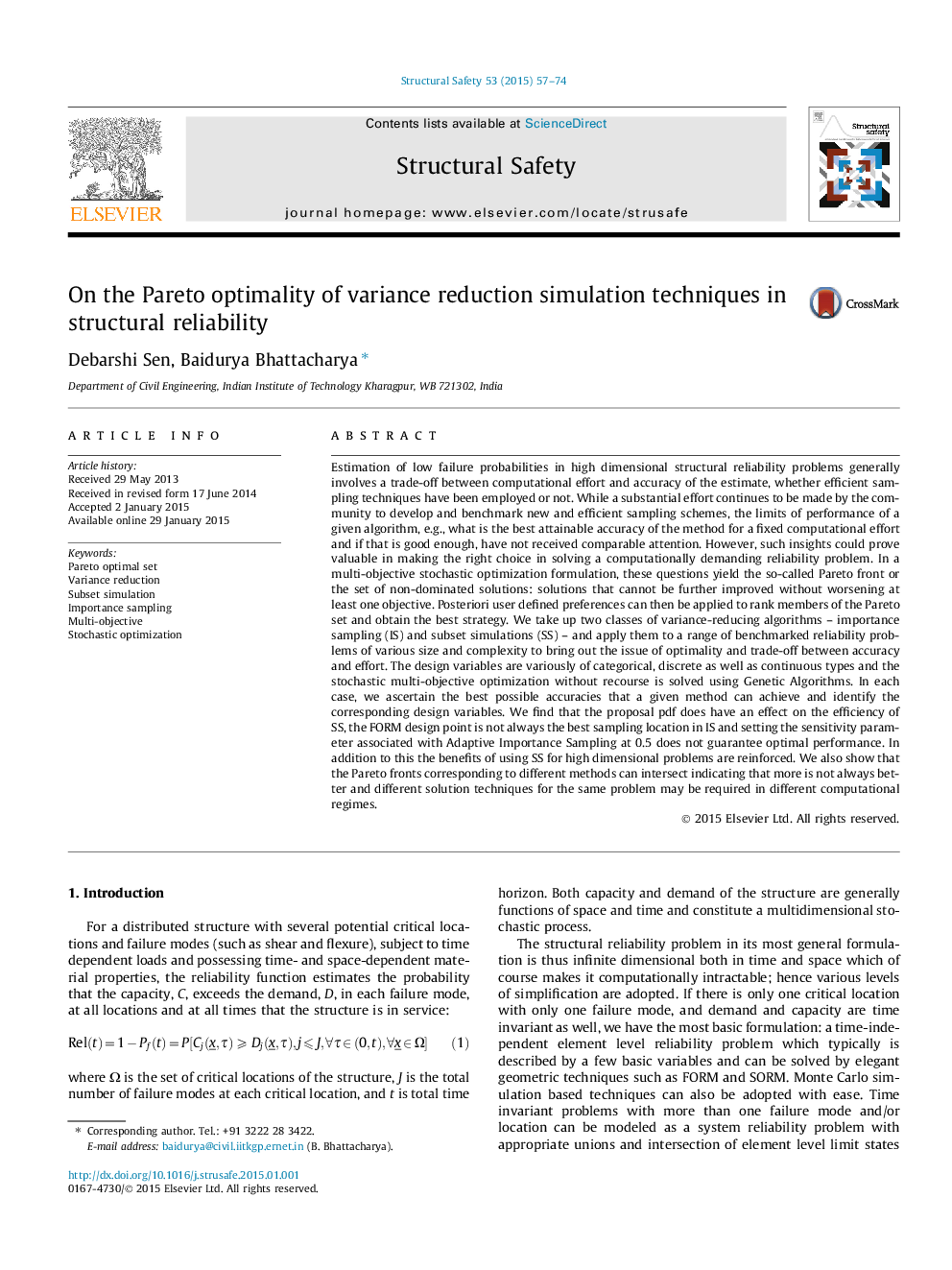| کد مقاله | کد نشریه | سال انتشار | مقاله انگلیسی | نسخه تمام متن |
|---|---|---|---|---|
| 307511 | 513371 | 2015 | 18 صفحه PDF | دانلود رایگان |
• Trade-off between error and effort of variance reduction algorithms is discussed.
• Multi-objective stochastic optimization framework is adopted to study the trade-off.
• Six benchmark reliability problems of increasing complexity are analyzed.
• Pareto sets for four variance reduction algorithms obtained for each problem.
• Best algorithm, limits of performance, optimal design variables are discussed for each.
Estimation of low failure probabilities in high dimensional structural reliability problems generally involves a trade-off between computational effort and accuracy of the estimate, whether efficient sampling techniques have been employed or not. While a substantial effort continues to be made by the community to develop and benchmark new and efficient sampling schemes, the limits of performance of a given algorithm, e.g., what is the best attainable accuracy of the method for a fixed computational effort and if that is good enough, have not received comparable attention. However, such insights could prove valuable in making the right choice in solving a computationally demanding reliability problem. In a multi-objective stochastic optimization formulation, these questions yield the so-called Pareto front or the set of non-dominated solutions: solutions that cannot be further improved without worsening at least one objective. Posteriori user defined preferences can then be applied to rank members of the Pareto set and obtain the best strategy. We take up two classes of variance-reducing algorithms – importance sampling (IS) and subset simulations (SS) – and apply them to a range of benchmarked reliability problems of various size and complexity to bring out the issue of optimality and trade-off between accuracy and effort. The design variables are variously of categorical, discrete as well as continuous types and the stochastic multi-objective optimization without recourse is solved using Genetic Algorithms. In each case, we ascertain the best possible accuracies that a given method can achieve and identify the corresponding design variables. We find that the proposal pdf does have an effect on the efficiency of SS, the FORM design point is not always the best sampling location in IS and setting the sensitivity parameter associated with Adaptive Importance Sampling at 0.5 does not guarantee optimal performance. In addition to this the benefits of using SS for high dimensional problems are reinforced. We also show that the Pareto fronts corresponding to different methods can intersect indicating that more is not always better and different solution techniques for the same problem may be required in different computational regimes.
Journal: Structural Safety - Volume 53, March 2015, Pages 57–74
